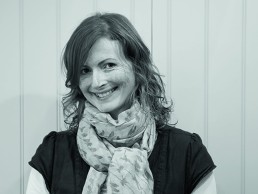
Jennifer Hamilton
what made you become an interior designer?
I am one of those lucky people who is actually doing what they wanted to do from about age 12 … and is still loving it! I have always enjoyed making the environment around me better and used to lie awake at night redesigning friends’ houses. I’ve now actually designed many of them in reality – for example our Addison Gardens project is the house of an old school friend. I am also a perfectionist and a bit of a control freak – I think those are actually good qualities for an interior designer – it means I can’t stop until I feel the client is happy!
how important is lighting to your designs?
Lighting is crucial. It doesn’t matter what you do with a space, if the lighting isn’t right – or the effect of the daylight upon the colours and materials used – it won’t be as good as it should be. I love atmospheric lighting, which conjures up a mood rather than a task, and I like a space to feel a certain way, whether that is bright and breezy or dark and moody. I don’t like bland.
why is spending time thinking about and working with light important to you?
After many years in commercial design at MoreySmith, where we, as the designer, were generally in control when it came to the lighting, I am finding that lighting for residential projects is more subjective. What I think is the best lighting effect or level does not necessarily suit the client – some people like bright houses, some people (like me) err towards dramatic gloom! So, part of my job is to discover the preferences of each client and tailor the lighting to them, while still making the design work as a whole.
about the role lighting plays in the light of the city? How do you contribute to that?
Lighting plays a big role, and for me the focus is on houses in London. For the most part this is under individual control and I love the random and unplanned nature of the residential scene. Do you ever gaze out over a rooftop or street scene at night and wonder about the rooms that you want to be in and those you don’t? I want to add more of the ones you do!
how do you approach lighting a building through architecture?
In older buildings I like to keep things soft, mixing general lighting, which you can dim according to taste, with accent lighting, which adds a certain feel on its own. This brick wall forms the back of the old house we extended in Tunbridge Wells and looks great with antique brass swan necks imitating the old gas lamps.<br />In more modern spaces, I love the way concealed lighting adds an ethereal glow… like this library space for a house in Brook Green.
about the best and worst illuminated spaces you have visited?
There is a pub in my home town which has just spent a fortune refitting itself – we waited eagerly for the result, hoping this would be a lovely cosy gastro pub for a family Sunday lunch. But no… despite a selection of Farrow & Ball paints and a huge array of different and not totally awful light fittings, which I imagine on paper would have looked like a design-led approach, I think that the heights are all wrong, and everything is too bright and cold. During the day there is no atmosphere at all, and at night it’s like sitting in the middle of an empty front room with the curtains open and the ‘big light’ on. Also, surprisingly a lot of hairdressers have awful lighting with sharp spotlights right over your head, leaving horrible shadows under the eyes. On a more positive note, I love cosy low-ceilinged pubs with log fires and candles. The Talbot in Somerset has it just right in their bar… or our recent project for Cullenders Deli in Reigate, where industrial wall lights bounce off the tiled walls, creating both a utilitarian and welcoming feel at the same time.
about the importance of shadows and the balance of darkness and light in your work?
Sometimes the change from one element to another is what makes both even better. In a soon to be completed project, we are installing a 4m long tunnel between two cavernous basement spaces. Lined with black, sandblasted oak panels to walls and ceiling and lit only by a concealed LED at the top, this will be an incredibly dramatic space, which will contrast with and enhance the sense of light and space in the rooms either side.
In another house in Barnes, London you leave a traditional entrance hall with panelled stairs – just pendant lighting and north facing daylight filtering through a frost glass door – and sliding back the bookshelf step into a bright open-plan living space with full-height glazing by day, and by night a 7m concealed light-raft, which casts a soft light to the length of the space and down the soft linen curtains.



